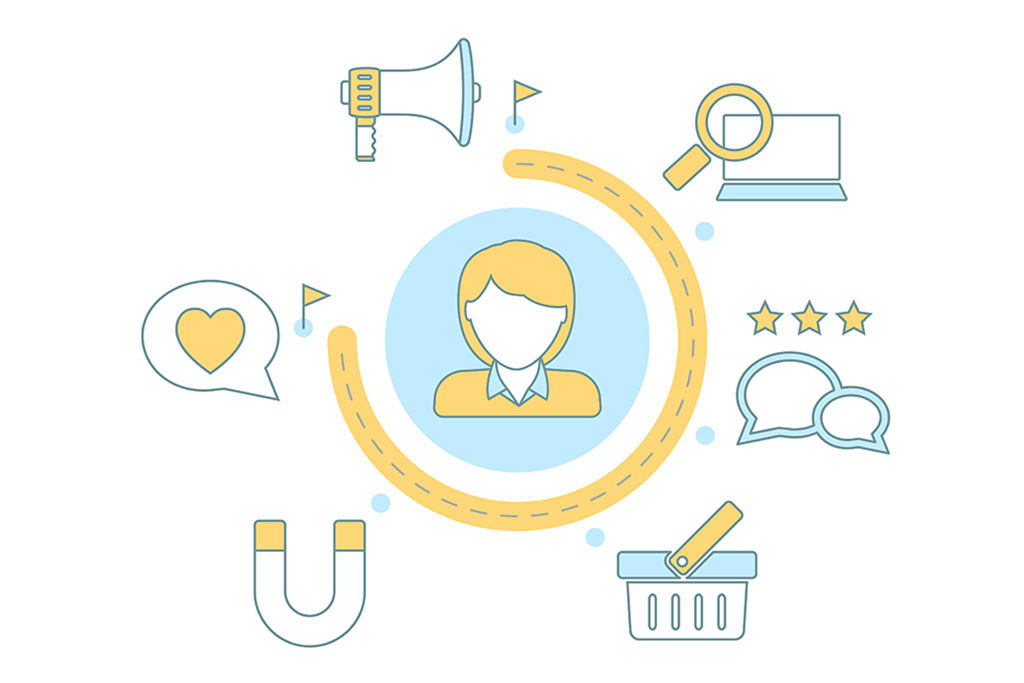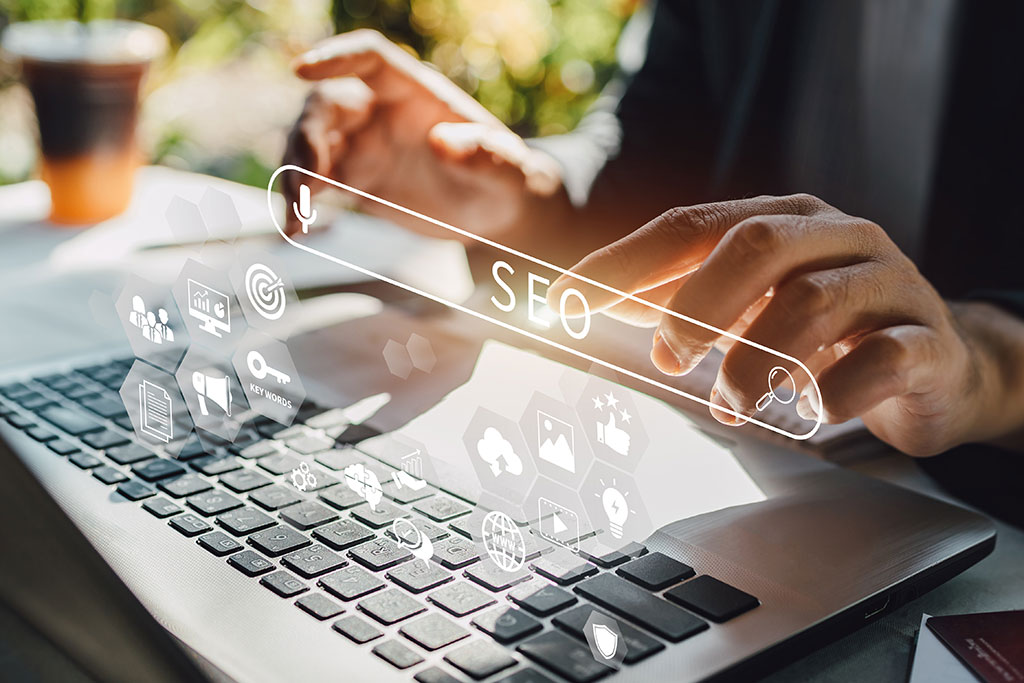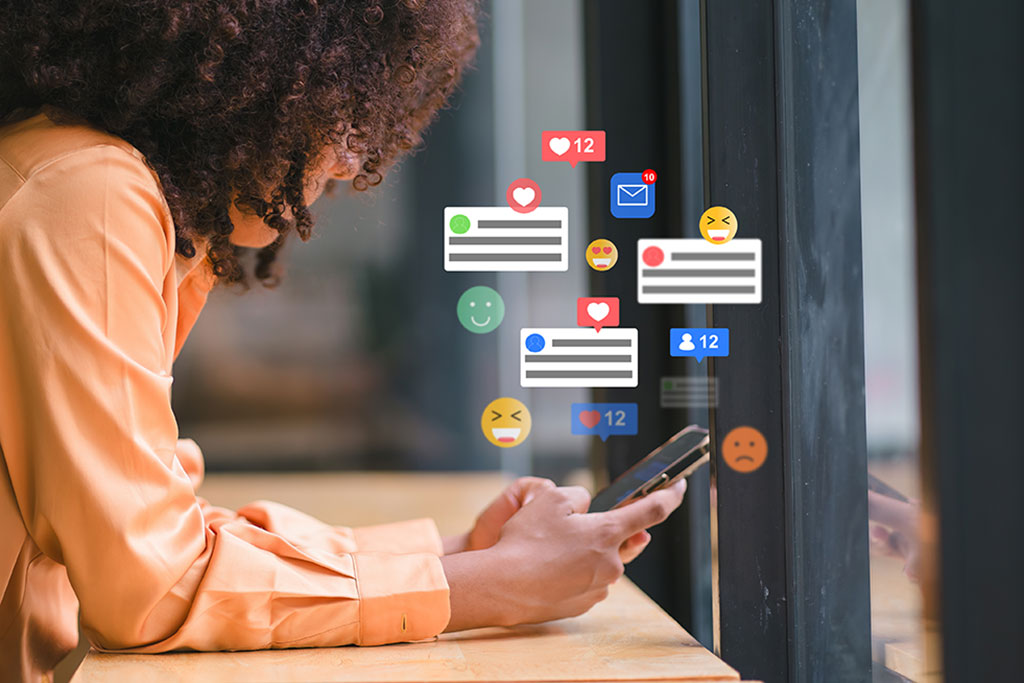Content Ideas for the Customer Journey
One of the greatest ways to coax your audience into buying your products or services is to leverage marketing content, fine-tuning the verbiage to shape your brand identity and effectively pitch what you sell.
However, consumers are barraged by ads every time they look at a smart device, take a drive, or walk down a busy street. So how can you craft emails, social media posts, and print materials that hook their drifting attention? If you’re eager to supercharge your organization’s omnichannel content strategy, adapt it to an easy framework: the customer journey.
The pathway to patronage
An essential sales and marketing tool, the customer journey maps your prospects’ decisions before, during, and after making a purchase. The general stages of this process are:
- Awareness
- Consideration
- Acquisition
- Onboarding
- Engagement
- Advocacy
For a more elaborate introduction to the customer journey and a template for drafting your own version, check out this in-depth guide. Once you understand the exact ways your clients interact with your business, you can identify unique lead-conversion challenges and opportunities at each step—and proactively strategize marketing that caters to prospects based on which phase they occupy.

Awareness
The bulk of your marketing content may be focused on this stage, wherein you introduce the public to your business and promote its offerings. Because these cold leads have no prior connection to you, it’s your job to speak to their needs and motivate them to make a purchase. Craft social media posts and ads with concise language that appeals to readers’ emotions and briefly illustrates who you are, what you do, and what makes your brand unique (e.g., “This software tool could be your answer to payroll stress.”). Also make sure that you customize content for each platform to boost engagement.
As for bringing organic leads to your website, take care to follow SEO best practices on all pages: write quality posts, utilize descriptive headers to ensure that they’re scannable, and incorporate searchable keywords like “personal accountant in New York.” And don’t overlook the power of blogs. Post ones that answer FAQs about your products and delve into general-interest topics, even if they only mildly pertain to your brand. For example, a landscaper could publish updates about interior design trends, wrapping up with a call to action like “Interior style trends change often, but our garden designs have long-lasting appeal—call us today.”

Consideration
Once they hit the consideration stage, prospects are actively looking for solutions to their needs and are weighing your organization as an option. Send segmented emails and text messages to those who have followed embedded links to your website, downloaded white-paper content, or otherwise demonstrated an interest in your offerings. Write personalized and engaging headers like “Still Interested? So Are We” to increase their open rates.
Because leads are still assessing the benefits of purchasing from you, your goal with consideration content is to leverage persuasion. Reflect on the value people can gain from your products or services and what makes your company exceptional: low pricing, superior craftsmanship, attentive service, etc. Craft content that succinctly and convincingly promotes these perks, especially for follow-up touchpoints, and you may just reel in those leads who are on your hook.

Acquisition
Although consumers at this stage have already made a purchase, tailoring marketing content for them is more crucial than you may realize. Buyer’s remorse can hit quickly, so utilize verbiage that makes them feel as if they’ve been initiated into an elite club. For instance, a flyer in your product packaging could state “Welcome to [your company]. You’re on your way to surefire success!”
Most importantly, though, acquisition content should express sincere gratitude for your buyers’ patronage. Thank them in postpurchase emails or text messages immediately after they’ve handed over their money to inspire warm feelings, leaving them with an all-around positive impression of your business.

Onboarding
Customer service is the name of the game in this phase, during which acquired customers learn how to obtain the most value possible from their purchases. Write detailed instructions that guide them toward using your products or services effectively while driving home their benefits. Take the example of a home stereo installer, who could provide steps for pairing speakers with smart devices, understanding the remote’s functions, and troubleshooting common issues like no sound.
However, don’t make your customers feel too independent—remind them that you are always one message away to help them feel more secure in their purchases. For inspiration, consider the conclusion of home decor brand CB2’s postpurchase emails, which not only informs clients that help is available but also embeds links to pages where they can obtain instant support and browse similar products.

Engagement
Every current client is at risk of becoming a former one. Price wariness, promotions from competing businesses, or even plain loss of interest could derail them from making future purchases. So it’s essential that you maintain ongoing contact, such as through text messages, emails, and mailers, to keep your business top of mind. This will guide converted clients into the engagement phase, where they remain plugged into your messaging.
Primarily, focus on developing entertaining and intriguing content that will entice more views, follows, and interactions via likes, comments, and shares. Try leaning into humor on social media by capitalizing on a viral trend or showcasing the lighter side of your work, or craft ads that tease new products and promote temporary discounts. Keep previous purchasers hooked with attractive content, and you can “acquire” them once again.

Advocacy
Alongside high product quality, you need good marketing content to incentivize one-time or irregular buyers to proceed to the advocacy stage. In this culmination of the customer journey, they become steadfastly faithful to your brand over your competitors, turning into frequent shoppers and even sharing word-of-mouth referrals.

To encourage such commitment, promote loyalty programs and referral bonuses with rewards like discounts on upcoming purchases; you could also offer gifts for posting reviews on social media and Google. Broadcast these perks across your socials and in segmented emails, placing them front and center: “50% off your next consultation!” With such appealing content, you can transform acquired customers into brand advocates who make numerous purchases—and eagerly spread your message.
TAKE ACTION:
Referring to your organization’s customer journey, brainstorm omnichannel content that will be most effective at each stage.


















